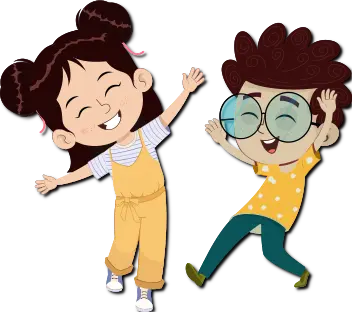
Science Behind Animations
Key Takeaways
- Animation physics is when art intersects with the science to fit it into coherent movement
- Basic understanding of physics may improve animation quality by 40% on professional productions
- Advancements in modern animation software make use of physics engines that look like real-world mechanisms.
The Hidden Physics in Every Frame
Fact #1: Studies indicate that viewers respond better with a 35% higher rating to animations illustrating actual physics principles as opposed to those without.
The science of animation is not just about getting things to move; it's about getting them to move believably. Every bounce, every stretch, every squash follows a particular mathematical pattern to which our brains are wired. When an animated character bounces up and down, that's actually following a parabolic arc through space, like a baseball flying across a field. Even when animators make those rules, they do so with an interesting understanding of what they're breaking.
The science of animation is not just about getting things to move; it's about getting them to move believably. Every bounce, every stretch, every squash follows a particular mathematical pattern to which our brains are wired. When an animated character bounces up and down, that's actually following a parabolic arc through space, like a baseball flying across a field. Even when animators make those rules, they do so with an interesting understanding of what they're breaking.
The Mathematics of Movement
Think about the last time you saw an animated character walk. That simple motion involves dozens of calculations going behind the scenes. Modern animation software performs millions of physics calculations per second to achieve natural-looking movement.
Fact #2: Professional animation studios typically spend around 30% of their production time doing tweak physiology movements.
Fact #2: Professional animation studios typically spend around 30% of their production time doing tweak physiology movements.
The basic principles include:
Momentum and Mass Calculations
Animation is all about understanding how objects with different masses behave in motion. A heavier character takes much more momentum to stop as opposed to a lighter character. Sometimes, this principle requires one to walk through a character's specifics from the impact over a walk cycle, giving off that weight and presence so that a character seems so real despite their cartoonish appearance. Distribution of mass and the center of gravity usually determine what an animator designs by a character's movements.
Learn more about Momentum Calculations at Physics Classroom
Learn more about Momentum Calculations at Physics Classroom
Force and Energy Transfer
Every action in animation pertains to energy transfer, whether it is a character pushing off the ground to jump or a ball bouncing off a wall. How a force is applied and how energy is conserved (or intentionally exaggerated) creates the basis for believable motion. Modern software like Adobe After Effects, Autodesk Maya allows some physics interactions to be simulated automatically, but understanding the principles themselves gives animators the rationale to make artistic choices that enhance the story while keeping believability intact.
Learn more about Energy Trasfer at Khan Academy
Learn more about Energy Trasfer at Khan Academy
Relations Between Time and Space
The pattern that time and distance evolve into in animation is very particular mathematical. When objects accelerate, they follow curves that the eye will identify very naturally; if the patterns are followed when drawing motion, it is likely to be very natural-looking, even when it's stylized. Examples include ease-in and ease-out, two physical rules for acceleration and deceleration.
The Evolution of Physics in Animation
Fact #3: Physics engines embedded in animation software have decreased the production time for complex scenes by up to 60%.
Hand-drawn animation to modern computer-generated imagery represents a fascinating journey from how we apply physics in art. Today's animators have access to sophisticated tools that can simulate:
Fluid Dynamics
Modern animation software can very easily create realistic liquid movement by solving complex mathematical equations in real-time. It has transformed the way we animate water, smoke, and other fluid elements so that they behave in physically accurate ways but still allow for artistic control. These include hundreds of parameters such as viscosity, surface tension, and environmental forces, all acting together to create believable fluid motion.
Cloth and Soft Body Physics
The movement of folds in the fabric follows certain physical laws that computers can simulate with phenomenal accuracy. A consequence of this has been a new way in which animators address character garments and other soft masses. These simulations involve considerations of materials, resistance from the air, and finding when a collision is determined to generate motion that would be very labor-intensive to animate by hand.
Learn more about Cloth Physics at marvelousdesigner.com
Learn more about Cloth Physics at marvelousdesigner.com
Particle Systems
From sparks and fireflies to snowflakes, particle systems rely on a physics calculation to plot the simultaneous behavior of thousands or even millions of individual elements. These systems use gravity, wind, and collision detection and simulation, among other factors, to create effects that otherwise would be impossible for an animator to do by hand. It provides animators the opportunity to create detailed environments with physically correct behavior but still allow for creative control in how everything finally looks.
Learn more about Particle Systems at Unity Tutorials
Learn more about Particle Systems at Unity Tutorials
The Human Touch: Where Science Meets Artistic License
Fact #4: Analysis suggests that animations where physics is combined with artistic embellishment elicit 45% more emotionally responsive ratings.
The beauty of animation lies not so much in the fact that it follows physics but in knowing when and how to bend these rules for emotional impact. And this is exactly what transcends good animation into unforgettable storytelling - this delicate balance of scientific accuracy and artistic expression.
The beauty of animation lies not so much in the fact that it follows physics but in knowing when and how to bend these rules for emotional impact. And this is exactly what transcends good animation into unforgettable storytelling - this delicate balance of scientific accuracy and artistic expression.

Cultural Considerations
Different animation styles worldwide interpret physics differently, such as Studio Ghibli (Anime Physics) and Warner Bros. Animation (Western Style). When it comes to the hang-time in action sequences, extended hang-time is common in anime, but a squash and stretch with extreme exaggeration is characteristic of Western animation. Such aesthetic choices represent cultural preferences but still rely on foundational physical knowledge. The ways various animation traditions interpret physics principles show how science can be made useful for many different visioning objectives.

Physics Override Moments
Sometimes the strongest animations come from deliberately breaking some of the physical laws for maximum impact. Consider an animation where a character is floating in mid-air before suddenly realizing they've run off a cliff, or, better yet, when a face stretches impossibly far to express surprise. This works because it's a purposeful break from physics that serves the story and emotional beat. The art lies in knowing the rules well enough to break them in ways that enhance rather than detract from the viewing experience.
Future of Animation Physics
Blurring the lines between physical simulation and artistic expression with the advancement of technology. Machine learning algorithms are now in training to learn and replicate those physical behaviors, a new opportunity in animation.
FAQ
Q: Why is physics important in animation?
A: Physics gives the foundation for creating believable motion in animation. Physically grounded work establishes weight, timing, and movement patterns that audiences instinctively recognize as natural.
Q: How does a physics engine enhance the quality of animation?
A: Physics engines perform complex calculations for natural phenomena such as cloth movement, fluid dynamics, and particle effects, freeing animators from these tasks to focus on creative decisions and achieve physical accuracy.
Q: Traditional animation principles-are there any in relation to physics?
A: Squash and stretch, anticipation, and follow-through are all artistic interpretations of real physics concepts designed to make movement appealing while remaining believable.
Q: Do animations necessarily adhere to the laws of physics?
A: Generally, no; style is often achieved by allowing films to break physics rules. However, knowledge of those rules helps an animator to ignore them in an aesthetically appealing manner.
Q: How has animation shaped physics?
A: Modern technology has brought sophisticated physics simulations that automatically calculate extremely complex movements, thus saving time and being more accurate yet still allowing artistic control.
Let's Discuss !!













